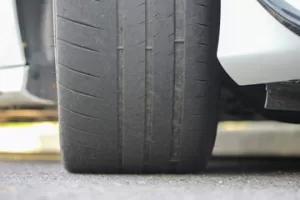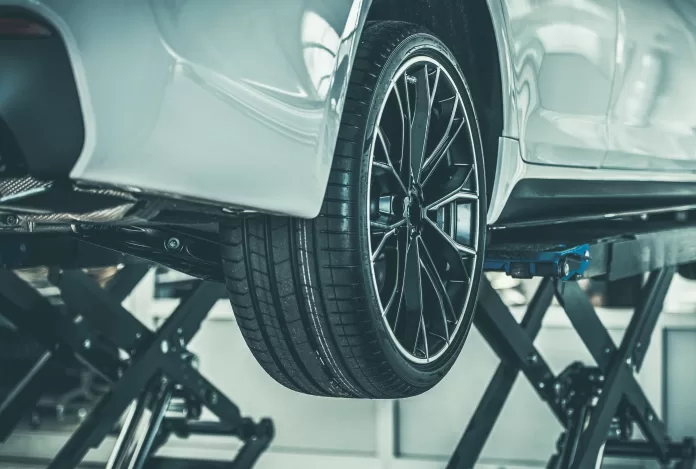One of the fundamental maintenance practices every car owner needs to be aware of is tire rotation. Tire rotation involves switching the front tires with the back tires and sometimes changing their side as well. This is necessary because tires do not wear evenly; and factors such as weight distribution, alignment, and driving habits contribute to the wear patterns, hence rotating your tires, can aid in extending tire life and boost your vehicle’s handling and safety. But how often should you actually rotate your tires?
Recommended Tire Rotation Schedule
Most automotive experts recommend rotating your tires every 6,000 miles (about 9,660km) to 8,000 miles (about 12900km). However, it’s necessary to consult your vehicle’s owner manual for the manufacturer’s specific recommendations. Some vehicles may have different requirements based on their design and tire type. The front tires and the rear tires experience different wear patterns. Front tires wear out faster on front-wheel-drive vehicles due to steering and braking responsibilities, while rear tires take the brunt in rear-wheel-drive vehicles.
Why Rotate Your Tires?
Before we even address the frequency of your tire rotation, atleast know WHY. There are several factors that can influence your vehicle’s tire rotation, including:
Driving Conditions:
If you frequently drive in harsh conditions (e.g., off-road, on gravel roads, or in heavy stop-and-go traffic), you may need to rotate your tires more often. Equally, aggressive driving, such as quick acceleration and hard braking, can also cause uneven wear.
Tire Type:
Different types of tires (all-season, performance, or winter) may have varying wear characteristics due to weight distribution. Consult the manufacturer’s recommendations and consider your driving habits.
Performance Vehicles:
Sports or high-performance vehicles might require more frequent rotations due to the demands placed on the tires.
Vehicle Type:
Front-wheel drive, rear-wheel drive, and all-wheel drive vehicles all have different wear patterns, which can influence rotation frequency.
Tire Alignment and Balance: Misalignment or imbalance can exacerbate uneven tire wear.

Signs Its Time to Rotate Your Tires
Recommendable, adhering to a schedule is excellent, however, staying alert to your tire’s condition is equally more important. Besides tracking mileage, watch for these indicators that suggest it’s time to rotate your tires:
Vibration or Noise:
If you feel vibrations in the steering wheel or hear unusual noises while driving, it may indicate that your tires are not making even contact with the road.
Visual Inspection:
Pay attention to signs of uneven wear. If you notice irregular wear patterns, it may be time for a rotation. Indicators include balding on one side of the tire or differences in tread depth. Also, if you notice that one tire is considerably more worn than the others, it may be time for a rotation.
Poor Handling and Control:
If your vehicle feels less stable or takes longer to respond to steering inputs, this may be due to uneven tire wear.
Tire Rotation Patterns
There are several common tire rotation patterns, and the best one for your vehicle will depend on the drive type and tire configuration. Here are a few standard patterns:
Forward Cross: For front-wheel-drive vehicles, the front tires are moved to the back on the same side, while the rear tires cross to the front.
Rearward Cross: In this pattern, rear tires go to the front on the same side, while the front tires cross to the back. This is often used for rear-wheel-drive vehicles.
X-Pattern: Suitable for all-wheel-drive vehicles, this involves swapping tires from corners diagonally (front-left to rear-right, and front-right to rear-left).
Side-to-Side: If you have non-directional tires, you can simply move them from one side to the other without changing their position.
The Benefits of Regular Tire Rotation
Increased Tire Life:
Regular rotations can help extend the life of your tires by ensuring that all four tires wear evenly, ultimately saving you money on replacements.
Enhanced Safety:
Evenly worn tires improve traction and handling, reducing the risk of accidents caused by tire failure or poor road grip.
Improved Fuel Efficiency:
Tires with uneven wear can cause drag, leading to decreased fuel efficiency. Rotating your tires can help with better alignment and reduced rolling resistance, which in return improves your fuel mileage.
Better Ride Comfort:
A vehicle that rides on evenly worn tires will provide a smoother and more comfortable ride. You’ll notice less vibration and noise.
How to Rotate Your Tires
If you feel comfortable doing it yourself and you’re handy with tools and have the necessary equipment (like a jack and jack stands), you can rotate your tires yourself. However, for those less experienced or who want the peace of mind that comes with professional service, it is best to visit a tire shop or dealer. Here’s a basic outline on how to rotate your tires:

Gather Tools: You’ll need a jack, jack stands, lug wrench, and a torque wrench.
Loosen Lug Nuts: Before lifting your car, slightly loosen the lug nuts on all wheels (don’t remove them yet).
Lift the Vehicle: Use the jack to lift the vehicle and then secure it with jack stands.
Rotate Your Tires: Follow the recommended rotation pattern (usually front to back and vice versa). If you have a directional tire, make sure to keep them rotated in the correct direction.
Reinstall Lug Nuts: Tighten the lug nuts in a crisscross pattern to ensure even pressure.
Check Pressure: Once rotated, inspect the tire pressure and adjust as needed.
Have a smooth, safe ride
Rotating your tires is a quite simple and vital part of vehicle maintenance; Therefore, don’t skip, rather make tire rotation a part of your regular vehicle maintenance routine. DIY tire rotation is an option, however, having a professional inspect and rotate your tires is highly recommended. Professionals can ensure that your tires are not only rotated but also properly balanced and aligned, further enhancing safety and performance.
By Irene Joseph




